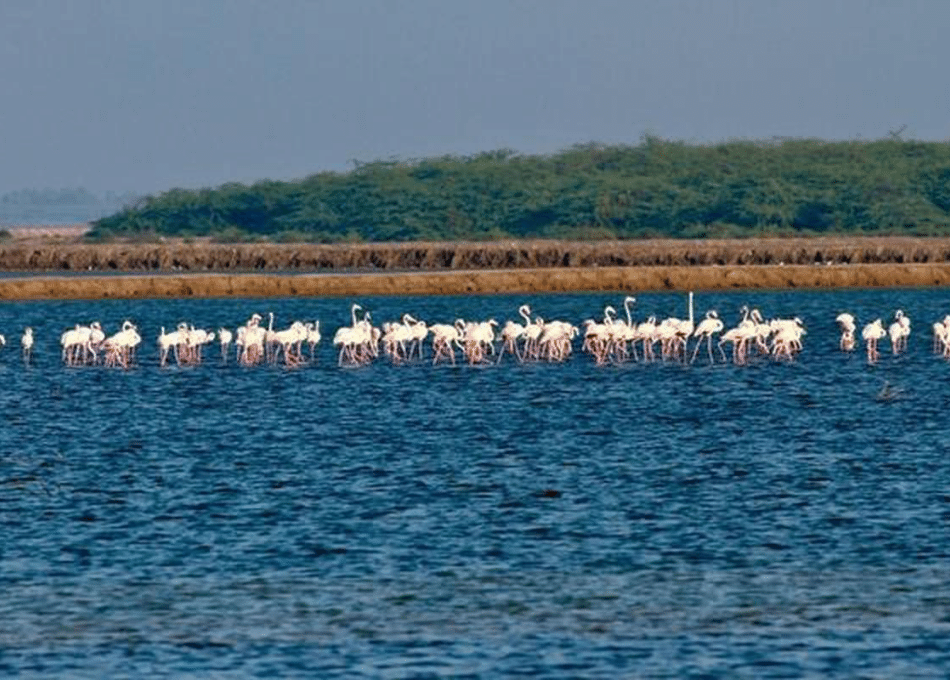
About Point Calimere Wildlife Sanctuary:
- Point Calimere Wildlife Sanctuary was established in the year 1967 and is situated in the state of Tamil Nadu.
- It houses the famous bird sanctuary of Vedaranyam and the Talaignayar forests.
- It is flanked by the Bay of Bengal in the east and Palk Strait in the south.
- It primarily focuses on the protection and conservation of the black antelopes, an endangered and endemic species that are found in this region.
- It is designated as a Ramsar site.
- Flora: It has mangroves, tropical evergreen forests, and grassland ecosystems.
- Fauna: Wild boar, macaque, black buck, chital, Great flamingo, Painted Stork, Little Stint,seagull,l and Brown-headed gull are normally found in the sanctuary.

About Bru refugees:
- Bru, also known as Reang, is a community indigenous to the Northeast, living mostly in Tripura, Mizoram, and Assam.
- In Tripura, they are recognised as a Particularly Vulnerable Tribal Group.
- They belong to Indo-Mongoloid racial stock. Their languages have an affinity with Austro-Asiatic groups under the Tibeto-Burman family.
- Ethnically, they are divided into two major clans, namely Meska and Molsoi.
- They speak a language known as "Kaubru,” which has a tonal effect on the Kuki language, though broadly, it is the Kok-Borok dialect.
- Occupation: They are still a nomadic tribe, and a large number among them maintain their livelihood involving Hilltop Jhum Cultivation and other food gathering activities.
- They believe in spirits and the existence of a soul.
- By religion, they are Hindus, and most of their deities are akin to gods and goddesses of the Hindu faith.
- They are traditionally endogamous and do not marry outside their community.
- In their tradition, the village council chief, known as "RAI,” permits Divorce and Widow marriage.

About Photocopying:
- It is a set of techniques with which to duplicate some content using, among other things, light. However, the contemporary colloquial use of the word ‘photocopying’ refers almost exclusively to xerography.
- Both the word ‘xerography’ and the name ‘Xerox’ come from the Greek root-word ‘xero’, meaning ‘dry’.
- This is because xerography is a type of photocopying method whose process doesn’t involve messy liquid chemicals.
- Xerographic machines are in ubiquitous use around the world today to quickly and cheaply reproduce printed material.
How does xerography work?
- Xerography has a few basic elements.
- Photoconductive surface: A surface coated with a photoconductive material. Such a material, when exposed to light, allows electrons to flow through it (i.e.,. conducts electricity) but blocks them when it’s dark.
- This surface is negatively charged by placing a thin, negatively charged wire with a high voltage next to it.
- Then, the sheet of paper to be copied is illuminated with a bright light. The darker parts of the paper – where something is printed, i.e. – don’t reflect the light whereas the unmarked parts do.
- This reflected light is carried by lenses and mirrors to fall on the photoconductive surface.
- In the parts of the surface where light falls, the photoconductive material will become conductive and allow the electrons near its surface to dissipate downwards (into a grounding).
- So the parts that remain negatively charged at the end of this step will correspond to parts of the paper-to-be-copied (TBC) where something was printed.
- Next, a powdery substance called toner is applied to the surface.
- The toner is positively charged, so it will settle where negative charge persists on the surface.
- The surface then transfers the pattern of toner on it to a sheet of paper. The paper has a stronger negative charge that causes the toner to jump.
- Finally, the toner is heated so that it melts and fuses with the paper. This is the paper that rolls out of the photocopying machine, the whole process having been completed in a few seconds.
- In practice, a rotating drum is used instead of a flat surface, and the paper TBC is illuminated by a flashing or stroboscopic light or a moving scanner.
About the Hostile Activity Watch Kernel (HAWK) system:
- It is Cloud Based Information Management System designed to manage interlinked databases of wildlife crime, wildlife criminals, and wildlife mortality.
- It will help officials analyse the information and develop actionable intelligence to prevent wildlife crimes and curb Illegal Wildlife Trade (IWT).
- Features
- The system connects the entire state forest department in real-time and the access is restricted through access levels.
- This is a large ERP model cloud based system that uses mobile and desk top interfaces to manage data.
- The entire HAWK system is divided into various modules that are interconnected with individual stand alone functions.
- This enables the system to be scaled up or down as per the needs of the state forest department and ensures customization opportunities for each state to accommodate the changes in procedures and also to accommodate the interface in regional languages.
- All the data managed by the HAWK system is secured with the government and industry standard security measures are applied to ensure data security.
- The development of HAWK started in 2017 in the state of Kerala by a joint team of Kerala Forest Department & Wildlife Trust of India.
- The system was officially launched in 2019 in Kerala, and since then it has been the official system of the state forest department.
- The implementation of a customised version of HAWK was initiated in 2022 in Karnataka in partnership with the ICT cell of Karnataka forest department, and the system is being implemented across the state.
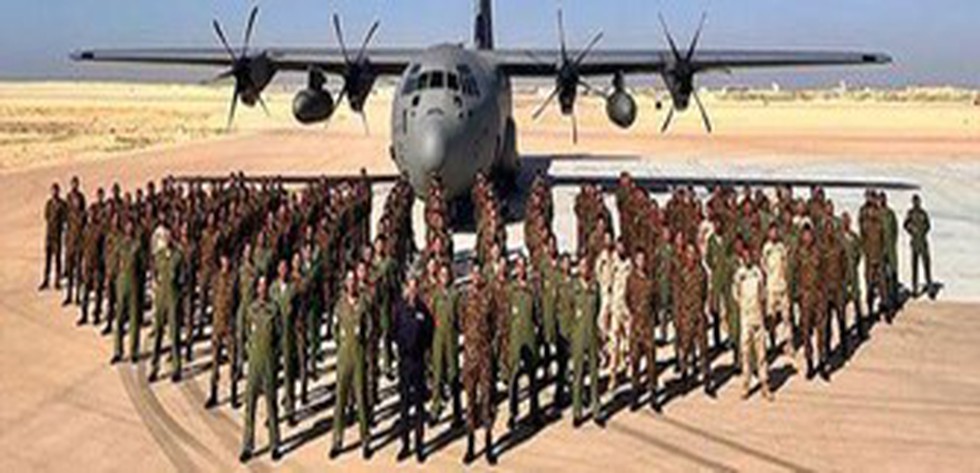
About Exercise KAZIND-2023:
- It is the 7th edition of Kazind exercise.
- The Joint Exercise between India and Kazakhstan was instituted as ‘Exercise PRABAL DOSTYK’ in the year 2016.
- After the second edition, the Exercise was upgraded to a company-level exercise and renamed as ‘Exercise KAZIND’.
- The Exercise has been further upgraded as a Bi-service Exercise this year by including the Air Force component.
- In this edition of the Exercise, both sides will practise conduct of Counter Terrorism operations in a sub-conventional environment under United Nations mandate.
- The contingents will jointly rehearse various tactical drills to include Raid, Search and Destroy Operations, Small Team Insertion and Extraction operations, etc.
- The scope of the Exercise also includes conduct of Counter Unmanned Aerial System Operations.
- Significance
- ‘It will provide an opportunity for both sides to gain insight into the tactics, battle drills, and procedures of each other, which is a prerequisite while operating under the ambit of the United Nations.
- The joint training will develop the necessary skills, resilience, and coordination to conduct joint military operations in Semi-Urban and Urban environments.
- Both sides will get a chance to practise drills on a wide spectrum of combat skills and mutually learn from each other.
- The exercise will provide an opportunity for the contingents to exchange views and share best practices.
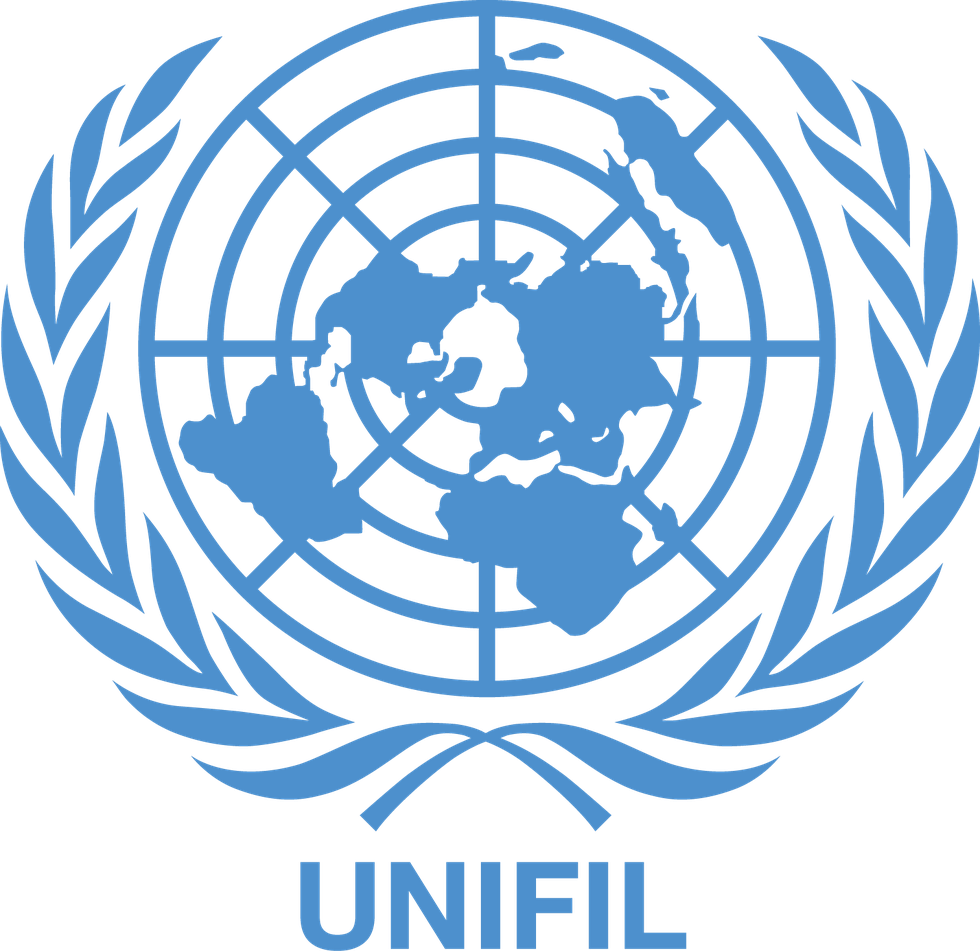
About United Nations Interim Force in Lebanon
- Originally, UNIFIL was created by the Security Council in March 1978 after Israel's invasion of Lebanon.
- Mandate: According to Security Council resolutions 425 (1978) and 426 (1978) of 19 March 1978, UNIFIL was established to:
- Confirm the withdrawal of Israeli forces from southern Lebanon.
- Restore international peace and security.
- Assist the Government of Lebanon in ensuring the return of its effective authority in the area.
- The mandate had to be adjusted twice, due to the developments in 1982 and 2000.
- It has around 10,500 peacekeepers coming from 48 troop contributing countries.
- The mission maintains an intensive level of operational and other activities amounting to approximately 14,500 activities per month, day and night, in the area of operations.
- Seventeen percent of activities are carried out jointly with the Lebanese Armed Forces. UNIFIL is complemented by a five-vessel Maritime Task Force.
- Funding: UNIFIL is funded through a separate account approved on an annual basis by the General Assembly
- It is a part of UN peacekeeping force.
About the UN Peacekeeping Force:
- UN peacekeepers provide security and political and peacebuilding support to help countries make the difficult, early transition from conflict to peace.
- Principles: UN Peacekeeping is guided by three basic principles:
- Consent of the parties;
- Impartiality;
- Non-use of force except in self-defence and defence of the mandate.
- The Security Council has a vital role in securing this commitment and cooperation while providing missions with realistic and clear mandates.
- There are currently 12 UN peacekeeping operations deployed.
- For its services, UN Peacekeeping has also received the Nobel Peace Prize.
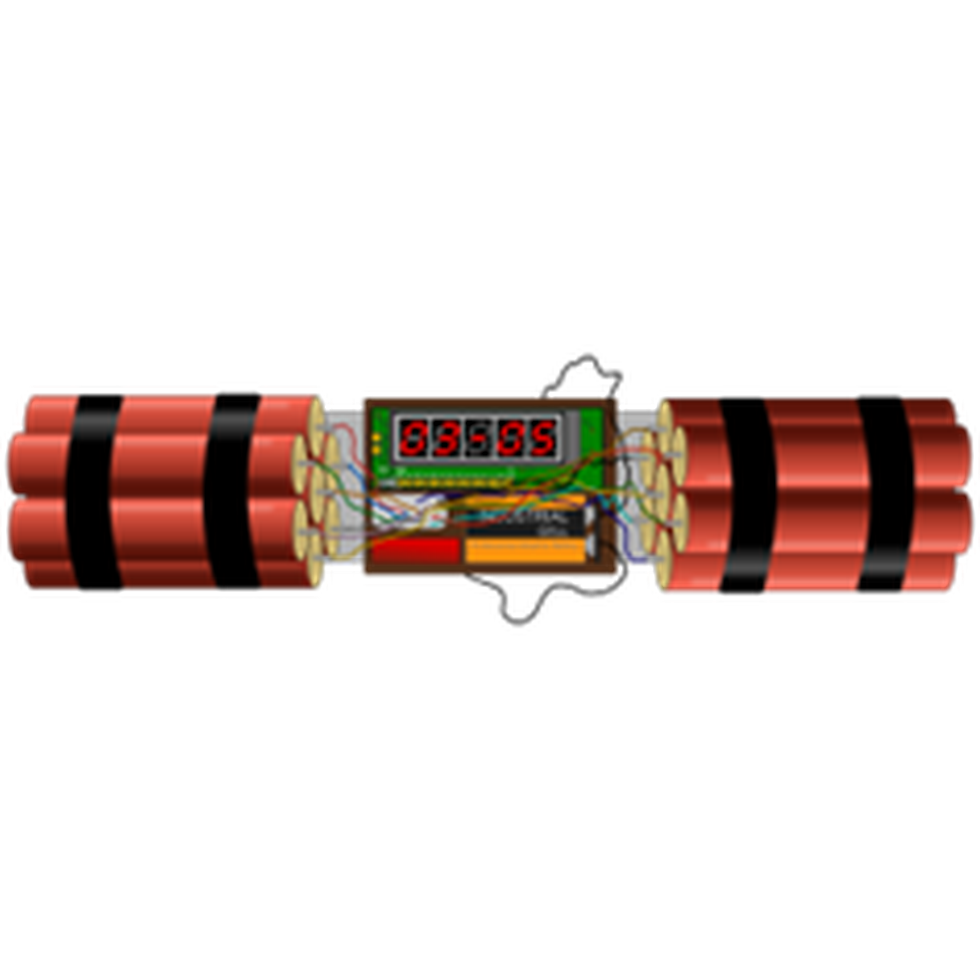
About Improvised Explosive Device (IED):
- An IED is a type of unconventional explosive weapon that can take any form and be activated in a variety of ways.
- IEDs are used by criminals, vandals, terrorists, suicide bombers, and insurgents.
- Because they are improvised, IEDs can come in many forms, ranging from a small pipe bomb to a sophisticated device capable of causing massive damage and loss of life.
- The extent of damage caused by an IED depends on its size, construction, and placement, and whether it incorporates a high explosive or propellant.
- The term IED came into common usage during the Iraq War that began in 2003.
- Elements of an IED:
- It consists of a variety of components that include an initiator, switch, main charge, power source, and container.
- IEDs may be surrounded by or packed with additional materials or “enhancements” such as nails, glass, or metal fragments designed to increase the amount of shrapnel propelled by the explosion.
- An IED can be initiated by a variety of methods, depending on the intended target.
- Materials used as explosives in IEDs:
- Many commonly available materials, such as fertiliser, gunpowder, and hydrogen peroxide, are used as explosive materials in IEDs.
- Explosives contain fuel and an oxidizer, which provides the oxygen needed to sustain the reaction.

About the Toll Operate Transfer (TOT) Model:
- In 2016, the Cabinet Committee on Economic Affairs (CCEA) authorised the National Highway Authority of India (NHAI) to monetise public-funded national highway projects and approved the ToT model.
- In the TOT model, public-funded projects, operational for two years, are put up for bidding, wherein the right of collection and appropriation of fees is assigned for a predetermined concession period (30 years) to concessionaires (developers or investors) against the upfront payment of a lump sum amount to NHAI.
- Such assignment of rights shall be based on the toll revenue potential of the identified NH projects.
- Operation & Maintenance (O&M) obligations of such projects shall be with the concessionaire till the completion of the concession period.
- The concessionaires for such projects shall be appointed through a transparent and uniform procurement process within the ambit of a pre-defined and approved implementation framework.
- It will help in the utilisation of the corpus (generated from proceeds of such project monetisation) by the Government to meet fund requirements for future development and O&M of highways in the country, including in unviable geographies.
- TOT model has been developed to encourage private participation in Highway sector.
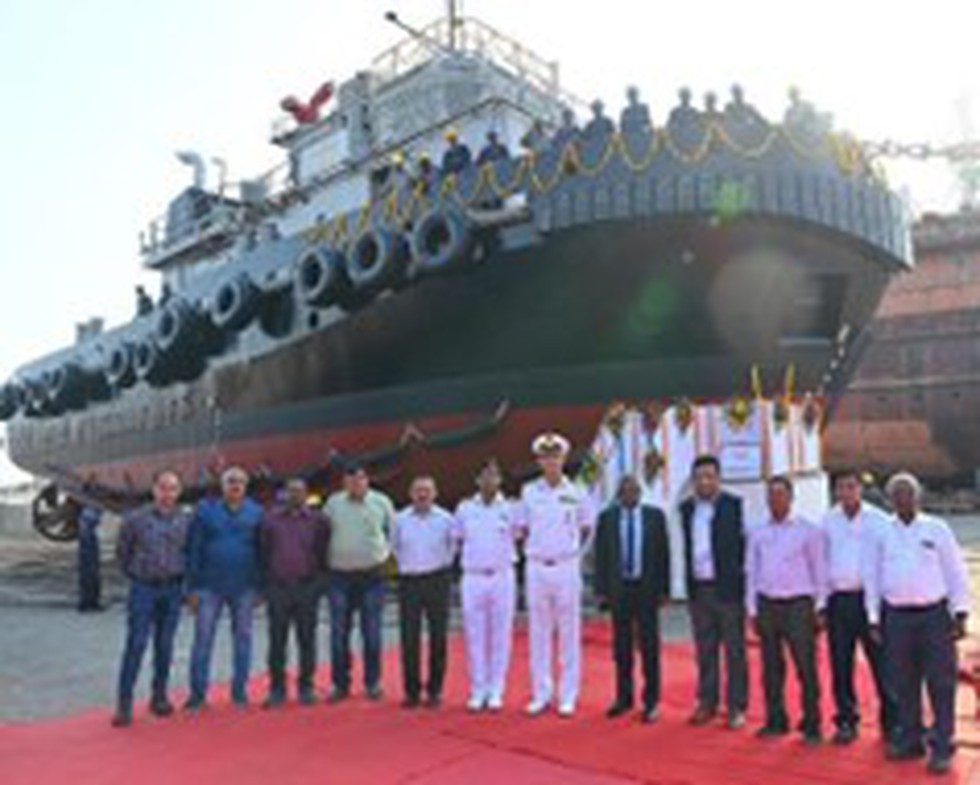
About the Mahabali Tug:
- It is a 25-ton Bollard Pull (BP) Tug.
- This vessel, a creation of Shoft Shipyard located in Bharuch, Gujarat, is one of three such tugs commissioned as part of a collaborative effort between the Ministry of Defence and the Shipyard.
- It has been constructed in accordance with the classification rules set forth by the Indian Register of Shipping (IRS).
- It will assume a crucial role in aiding naval ships and submarines during berthing and unberthing operations, as well as in navigating through confined waters.
- It is equipped to enhance firefighting capabilities for ships both alongside and at anchorage.
- It is also outfitted for limited Search and Rescue Operations.
Key Facts about the Indian Register of Shipping (IRS):
- Indian Register of Shipping (IRS) is an international ship classification society providing ship classification and certification as well as technical inspection services.
- The not for profit entity was founded in 1975.
- It is a member of the International Association of Classification Societies (IACS), which represents classification societies worldwide.
- IRClass Systems and Solutions Ltd. (ISSPL) is an organisation promoted by the IRS and was set up in 2014.
- The two companies, IRS and ISSPL, form the brand IRCLASS, which provides survey, inspection, and certification services to the maritime and industrial sectors.
- IRCLASS is committed to promoting safe and environmentally friendly engineering practises through its services to the business community.
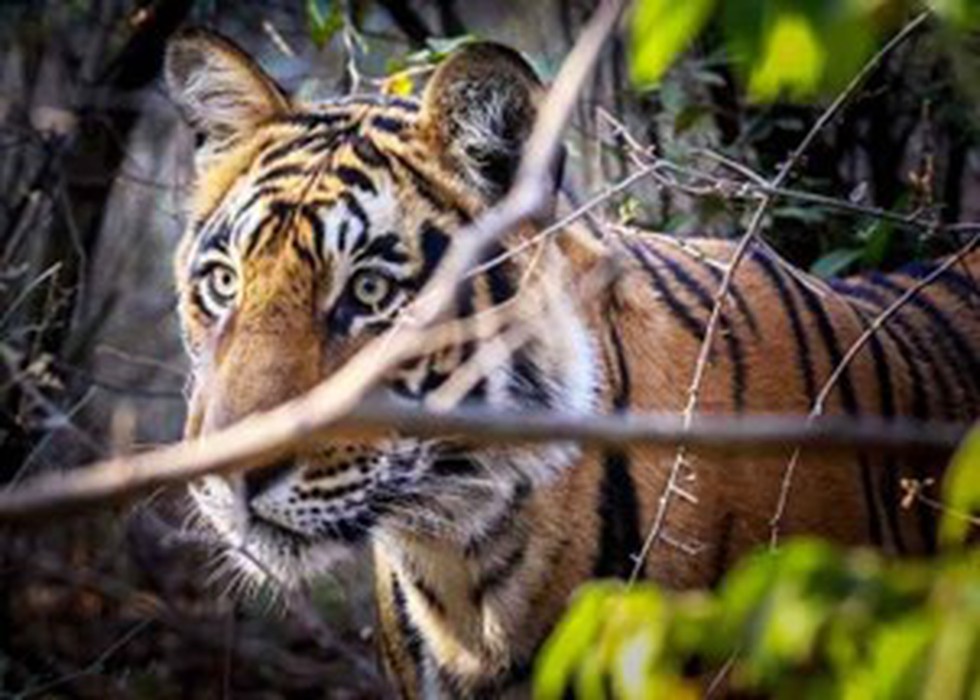
About Amangarh Tiger Reserve:
- Location:
- It is located in Amangarh, in Bijnor district, in the state of Uttar Pradesh.
- It is situated in the Terai region and covers an area of around 578 sq km.
- It shares its boundaries with Jim Corbett National Park of Uttarakhand.
- It was originally part of the Jim Corbett National Park, and after the state of Uttarakhand was carved out of Uttar Pradesh, Jim Corbett went to Uttarakhand, and Amangarh remained in Uttar Pradesh.
- It was declared a tiger reserve in 2012.
- Flora: The vegetation of the tiger reserve is a combination of grasslands, wetlands, and dense forest.
- Fauna:
- Mammals: Tiger, Elephant, Swamp Deer, Sambar, Cheetal, Hog Deer, Kakar, Langur, Sloth Bear, Porcupine, Otter.
- Birds: Hornbill, Red Jungle Fowl, Pea Fowl, Bengal Florican, Fishing Eagle, Serpent Eagle, Osprey, Woodpeckers, Shama, Indian Pitta, Paradise Flycatcher, Orioles, Emerald Dove.
- Reptiles: Monitor Lizard, Turtles, Python, Gangetic Dolphin, Mugger, Gharia etc.


.png)
.png)

























































































































































.png)
.png)
.png)
.png)
.png)


.png)
.png)
.png)










.png)
.png)
.png)
.png)
.png)
.png)
.png)
.png)
.png)

.png)







.png)
.png)


.png)
.png)
.png)


.png)

.png)
.png)





.jpg)

.png)
.png)


.png)

.png)
.png)
.png)

.jpg)

.jpg)


.png)

.png)
.png)
.png)
.png)
.png)
.png)
.png)
.png)
.png)
.png)




.png)

.png)





.png)
.png)
.png)
.png)
.png)
.png)
.png)
.png)
.png)
.png)
.jpg)
.jpg)

.png)
.png)
.png)
.png)
.png)
.png)
.png)
.png)
.png)
.png)
.png)
.png)
.png)
.png)
.png)
.png)
.png)
.png)
.png)
.png)
.png)
.png)



.png)
.png)

.jpg)
.jpg)


.jpg)
.jpg)
.jpg)
.jpg)
.jpg)

.jpg)








.jpg)
.jpg)
.jpg)
.jpg)
.jpg)

















.jpg)
.jpg)







.jpg)


















.jpg)
.jpg)






























































































.jpg)
.jpg)


























.jpg)

.jpg)










.jpg)








.jpg)




.jpg)










.jpg)


















.jpg)












































.jpg)














.jpg)
.jpg)
.jpg)





.jpg)

.jpg)
.jpg)





































































.jpg)


































.jpg)
.jpg)
















































.jpg)












.jpg)


.jpg)




.jpg)
.jpg)
.jpg)

.jpg)
.jpg)
.jpg)
.jpg)

.jpg)
.jpg)
.jpg)

.jpg)
.jpg)
.jpg)
.jpg)
.jpg)
.jpg)
.jpg)
.jpg)

.jpg)


.jpg)
.jpg)
.jpg)
.jpg)
.jpg)
.jpg)
.jpg)
.jpg)
.jpg)
.jpg)











.jpg)
.jpg)





.jpg)
.jpg)
.jpg)
























.jpg)
























.jpg)









.jpg)
.jpg)







.jpg)
.jpg)









































.jpg)
.jpg)
.jpg)
.jpg)
.jpg)

.jpg)
.jpg)
.jpg)
.jpg)
.jpg)


.jpg)
.jpg)
.jpg)
.jpg)
.jpg)

.jpg)
.jpg)
.jpg)
.jpg)
.jpg)
.jpg)
.jpg)
.jpg)
.jpg)
.jpg)
.png)

.png)
.png)

.png)
.png)
.png)
.png)


.jpg)
.jpg)

.jpg)
.jpg)
.jpg)

.png)
.png)
.png)
.png)
.png)
.png)
.png)

.png)
.png)
.png)
.png)
.png)
.png)
.png)
.png)
.png)
.png)





































































-min.png)



.png)




.png)








































